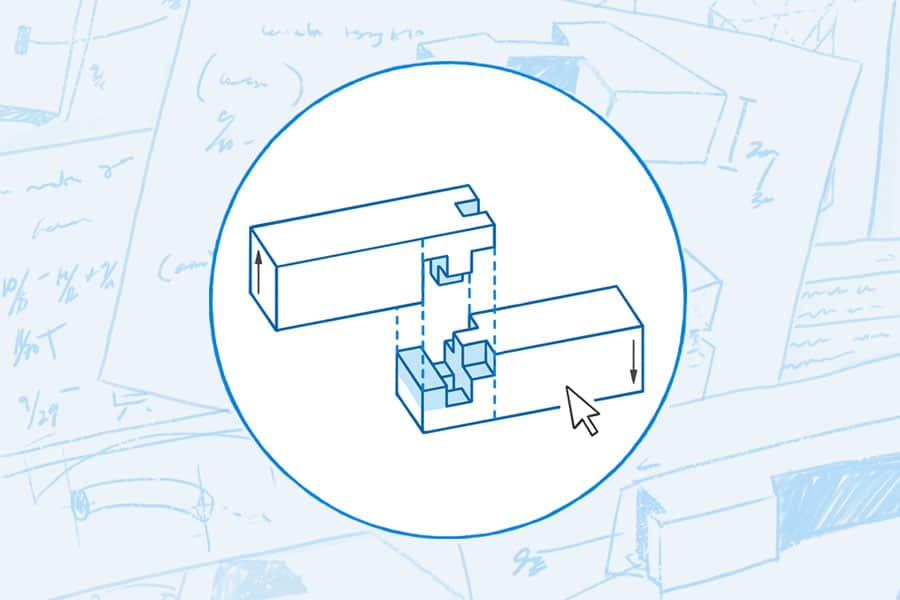Illustration by Rae Scarfó
Joinery is the art of cutting wooden pieces so they fit together like a jigsaw puzzle. In addition to being aesthetically pleasing, joinery can eliminate the need for hardware like screws, brackets or bolts. If left unglued, joints can also be disassembled and reassembled at will, making furniture (or even buildings) collapsible, portable and reusable.
However, joinery is complex, time-consuming and expensive when done by hand. A new software program aims to take the joint-creation process virtual, allowing users to design connections digitally before uploading them to a CNC router that brings them to life.
Think of Tetris, but with robot power tools.
Called Tsugite, meaning “splicing joint” in Japanese, the software works by turning pieces of wood into a 3D grid of cubes. Each cube, or “voxel,” can be moved or deleted, and then the computer automatically creates the matching joint on the other side.
“Other people who’ve browsed through voxelized joints, which is a very niche thing to do, have stopped at the first good solution,” said Maria Larsson, a Ph.D. student and research assistant at the University of Tokyo. “We wanted to actually explore the whole design space.”
Many combinations
Initially, exploring every combination of joint geometry might seem like a straightforward task. But the researchers quickly realized that even just a 3x3x3 grid of wooden voxels leads to millions of possible configurations. To simplify the problem, Larsson and her colleagues chose to focus only on the geometries that would be useful and could actually be produced by the CNC router. For a 3x3x3 joint, that leaves approximately an impressive but manageable 260,000 combinations.
As users explore possible joint geometries, the software can recognize a variety of relevant factors. The software calculates which faces experience friction and how much contact area the two pieces have. It looks for weak spots that experience forces perpendicular to the wood grain. It also evaluates the strength of the joint and can draw on the complete library of possibilities to provide recommendations to fix problems that might arise.
Still early stages
By making joinery so simple and accessible, Larsson said she sometimes gets asked if she feels like she’s taking away work from carpenters and joiners who’ve developed their skills over many years.
Larsson doesn’t see it that way. The type and variety of joints that can be made by hand still vastly outnumber what can be done with a CNC router. Everything made in Tsugite uses right angles—all the surfaces are cubes. Instead, Larsson sees the technology as another tool for joiners to use and a way for amateurs to create all-wood joints with relative ease.
Larsson and her team don’t have any immediate plans to commercialize the software, but they’ve made it freely available on GitHub, an open-source platform that allows anyone to access the code and try it.
“Quite a lot of people have already tried it and run it,” Larsson said. “They let me know if something’s not working.”












